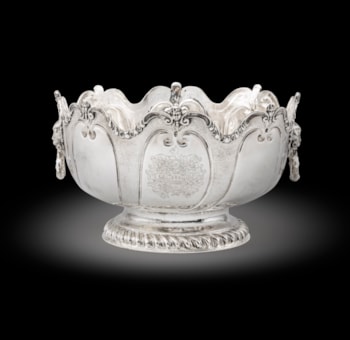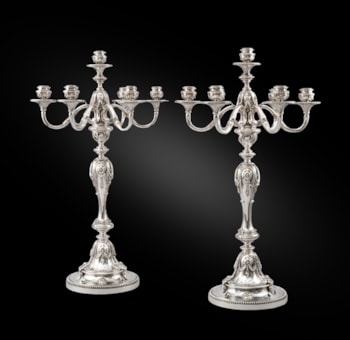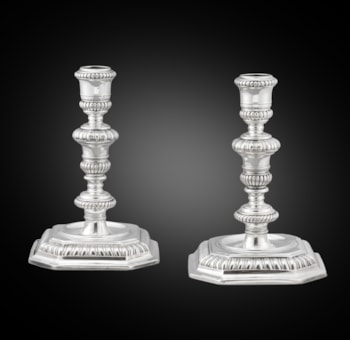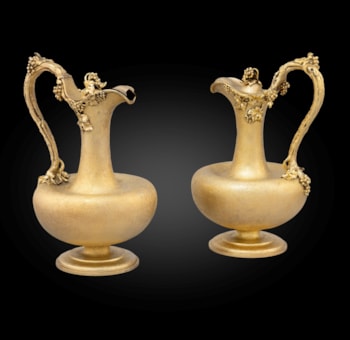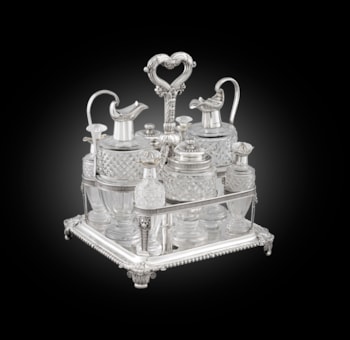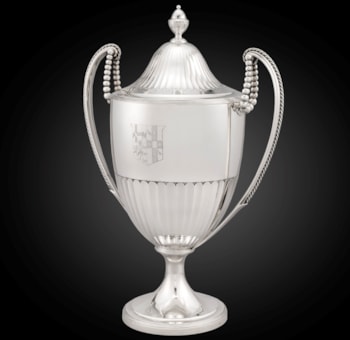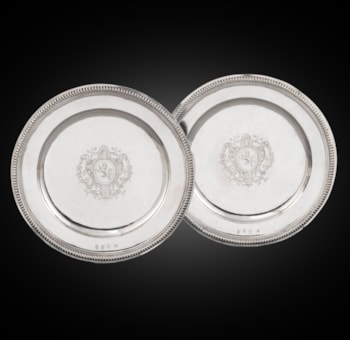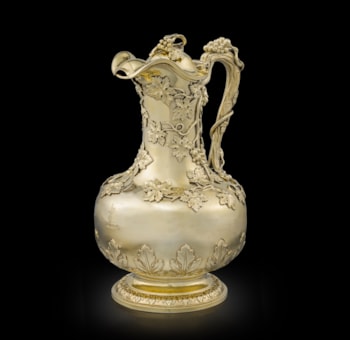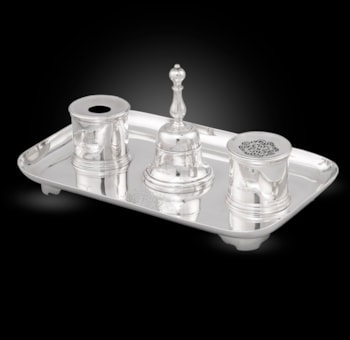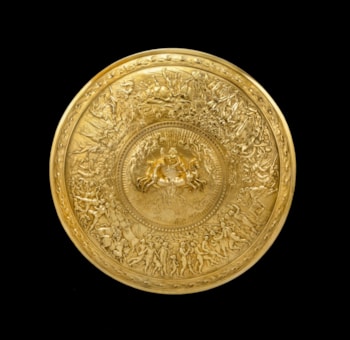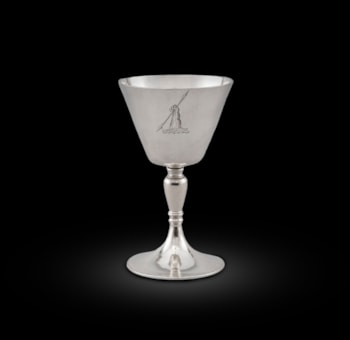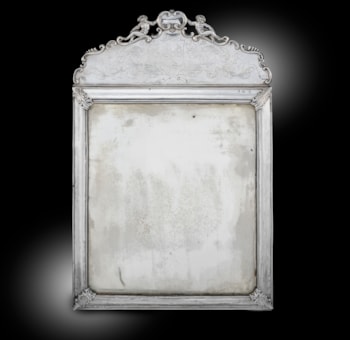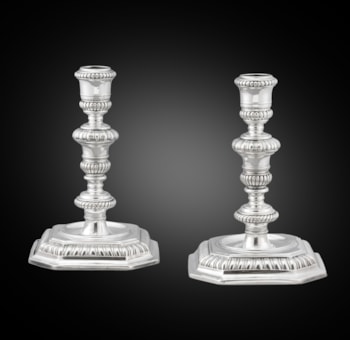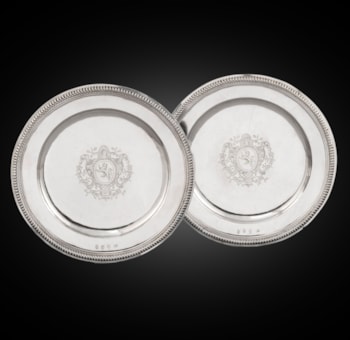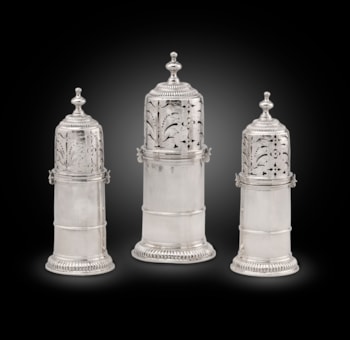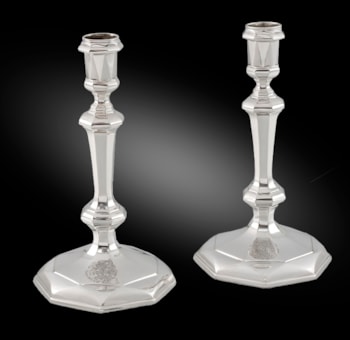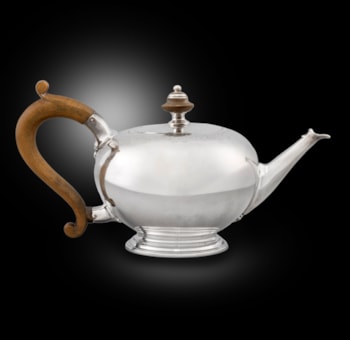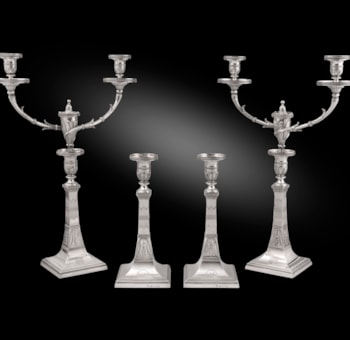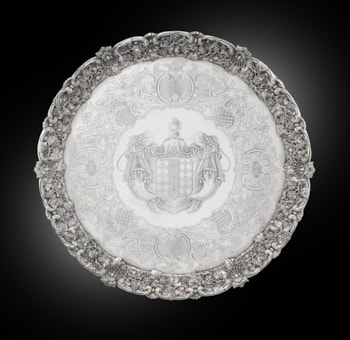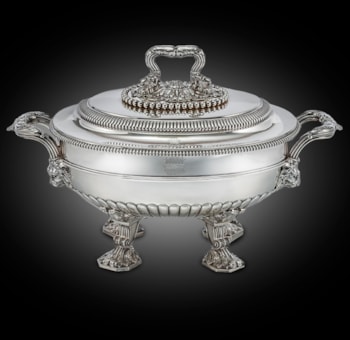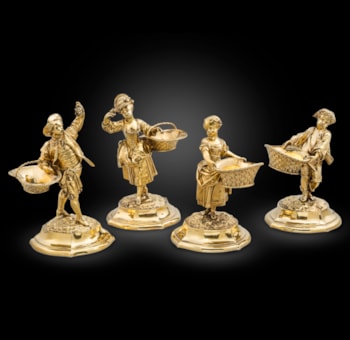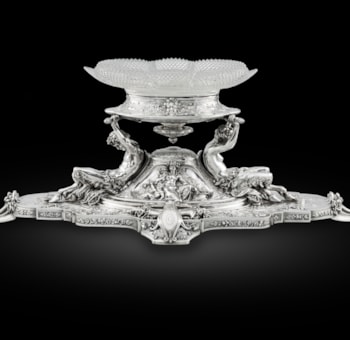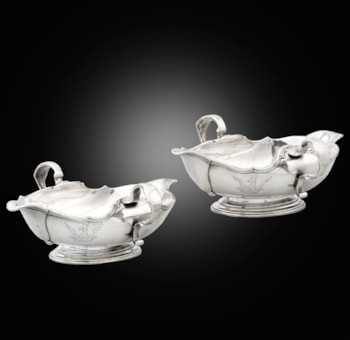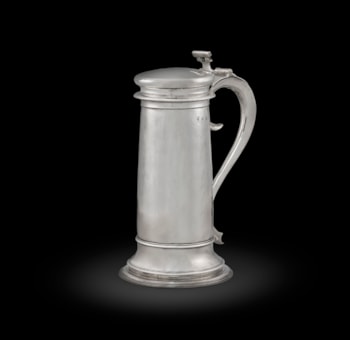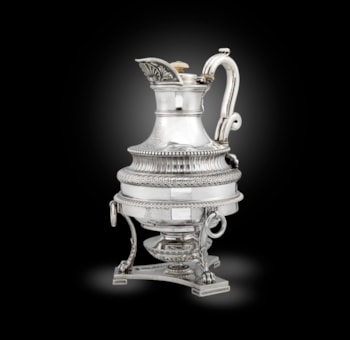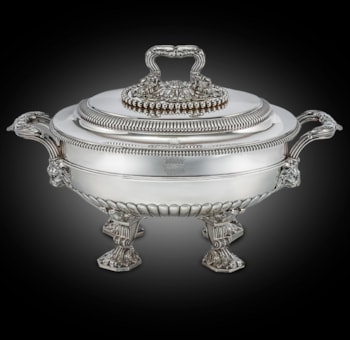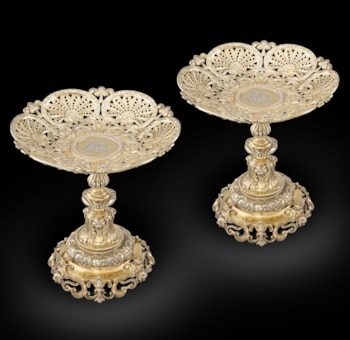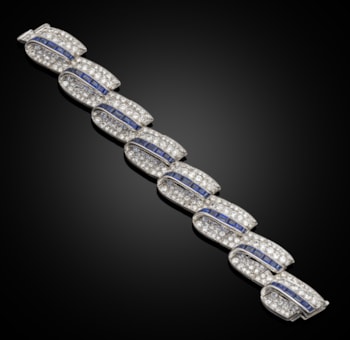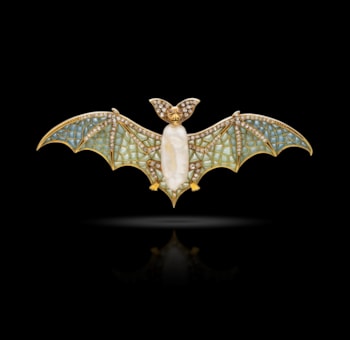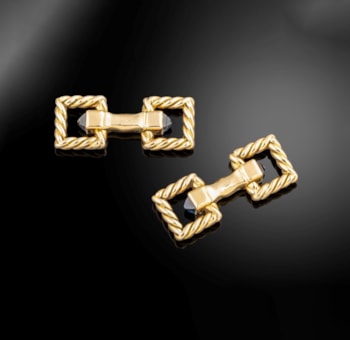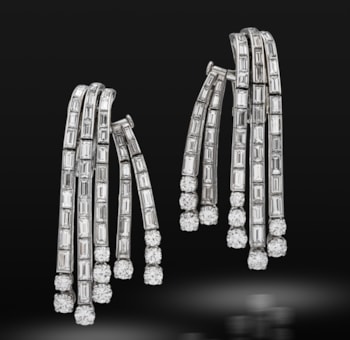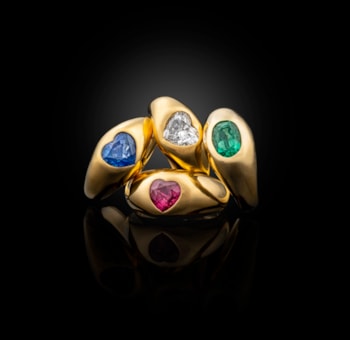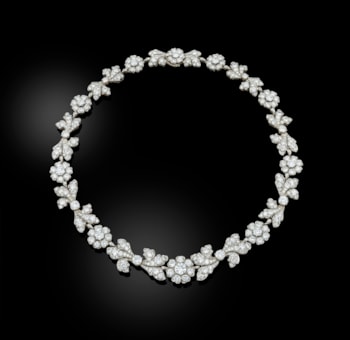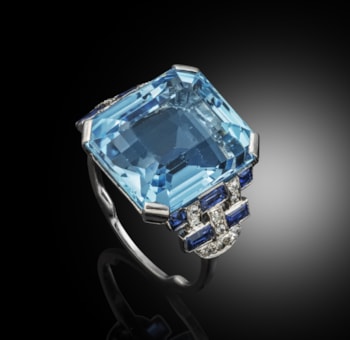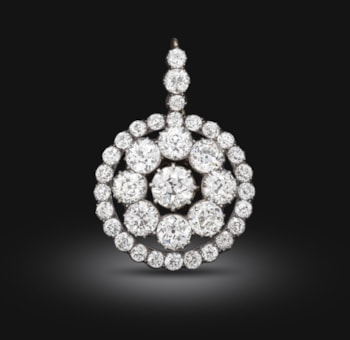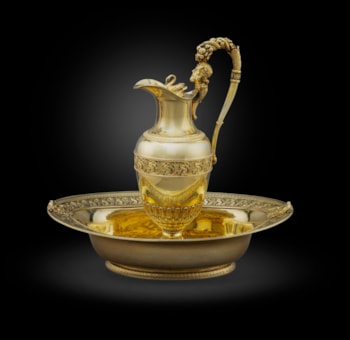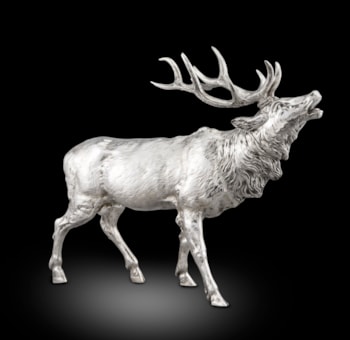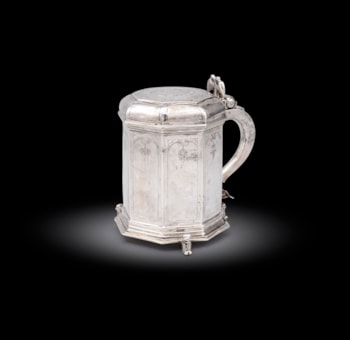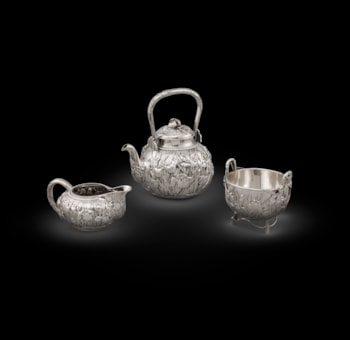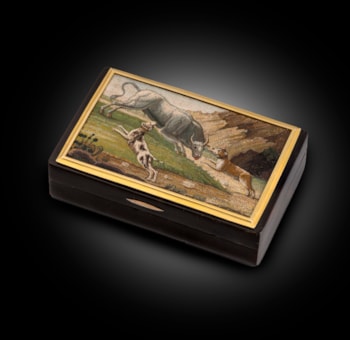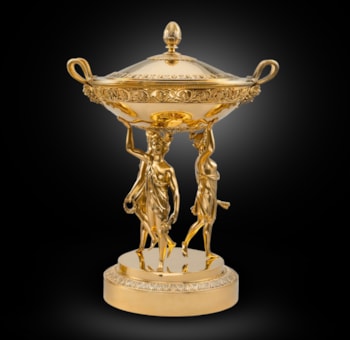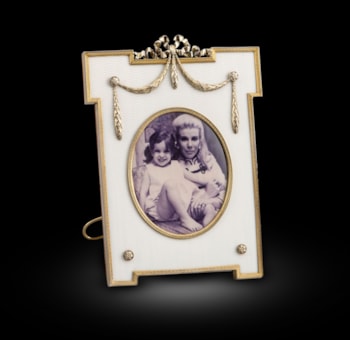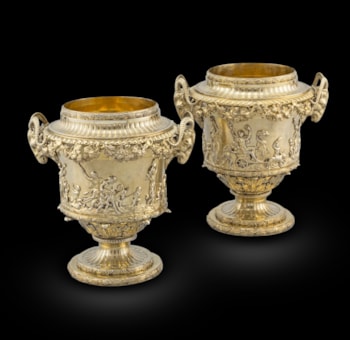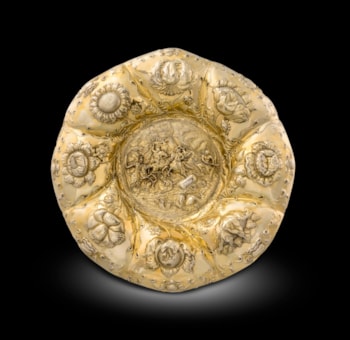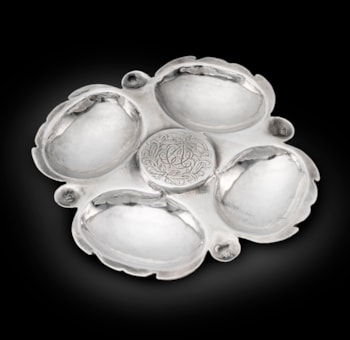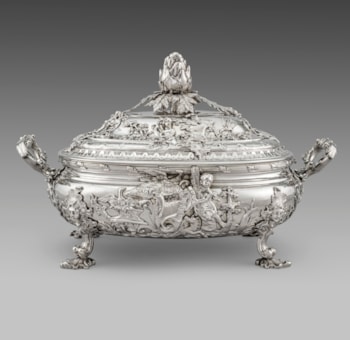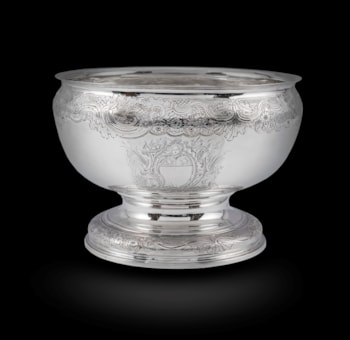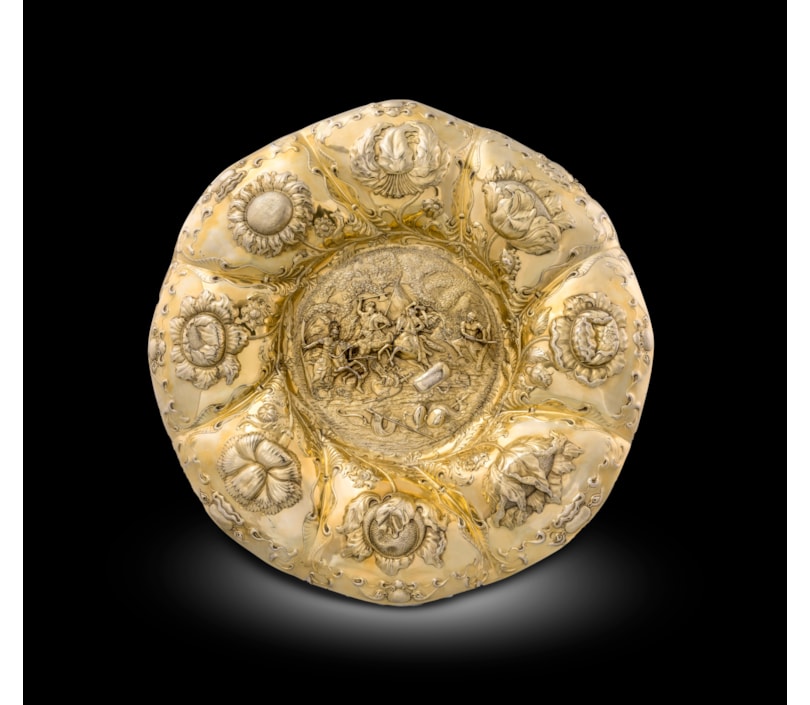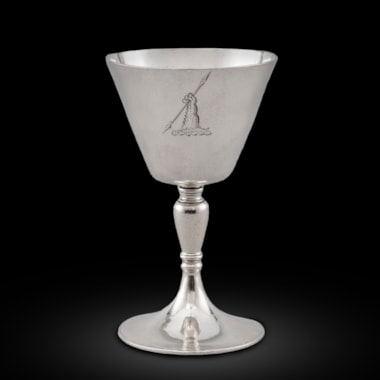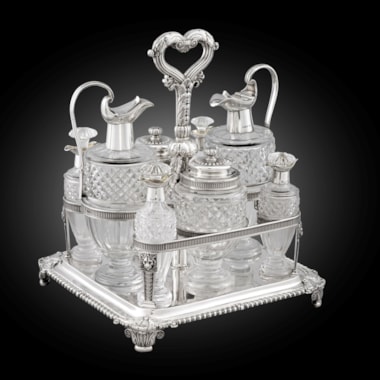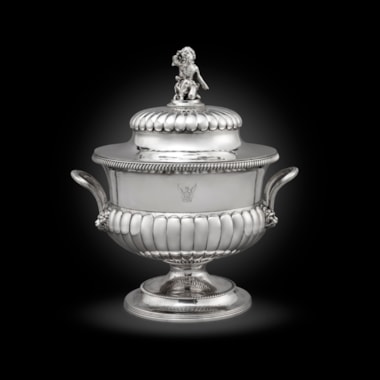The Royal collection may provide the clue to the origin of this series of Farrell sideboard dishes. In the collection at Windsor Castle there is a large single silver-gilt dish (the border matches the above) by Farrell 1819, the central plaque Dutch 17th century; this dish is en suite to a smaller pair, one of the pair being Dutch circa 1700, the other being made to match by Farrell in 1819.
It is suggested that Rundell, Bridge and Rundell engaged Farrell, who may well have been a specialist embosser, to remake the large dish and make another to match the smaller using as a base the Dutch 17th century original. Farrell then adopted the idea and continued to make them to order, thereby continuing the fashion.
Possibly the dish sold at the Duke of York's sale by Christie's, 19-22 March 1827, lot 69 or 70
Christie's, London, 15 July 1975, lot 135, from the collection of the Lord Barnard, T.D., of Raby Castle co Durham. The companion pair of smaller dishes by the same maker and of the same date, weighing 81ozs wa lot 136.
The Barnard collection contained six items formerly in the Duke of Sussex's sale at Christie's on 22 June 1843, and three items from the Duke of York's sale at Christie's, 19-22 March 1827. These included a pair of pilgrim bottles by Edward Farrell. This evidence suggests that Lord Darlington, an ancestor of Lord Barnard. might have been a major purchaser at these Royal sales.
Bellaigue, G. de, 'Edward Holmes Baldock', Connoisseur, August 1975, part I, and September 1975,
Culme, J., 'Kensington Lewis, A 19th Century Businessman', Connoisseur, September 1975, pp. 26-41. A well-researched definitive article on the career of Kensington Lewis detailing his association with Farrell.
Culme, J., Nineteenth Century Silver, pp. 73-75.
Grimwade, A.G., London Goldsmiths 1697-1837, Their Marks and Lives.
Jones, E.A., The Gold and Silver of Windsor Castle, pp. 40 and 56.
Duke of York's sale catalogue, Christie's, 19-22 March 1827, lot 69 or 70. part II.
Farrell's apprenticeship or freedom are unrecorded, and his early life is relatively unknown. Holden's Triennial Directory of 1805-7 described him as a silversmith, but his first mark was not registered until 1813. The most productive period of Farrell's career coincided with his association with the entrepreneur, silversmith, and jeweller Kensington Lewis, whose most important patron was Frederick, Duke of York. Lewis was supplied with extravagant sculptural plate in a variety of revival styles by Farrell, drawing principally on seventeenth-century Flemish, German and Italian designs in high relief. Lewis' business was unable to recover from the death of the Duke of York in 1827, and Farrell no longer had the opportunity to make the plate on such a grand scale. Thereafter, he was best known for highly embossed tea services chased with decoration derived from seventeenth-century Dutch genre painting.
You May Also Like




